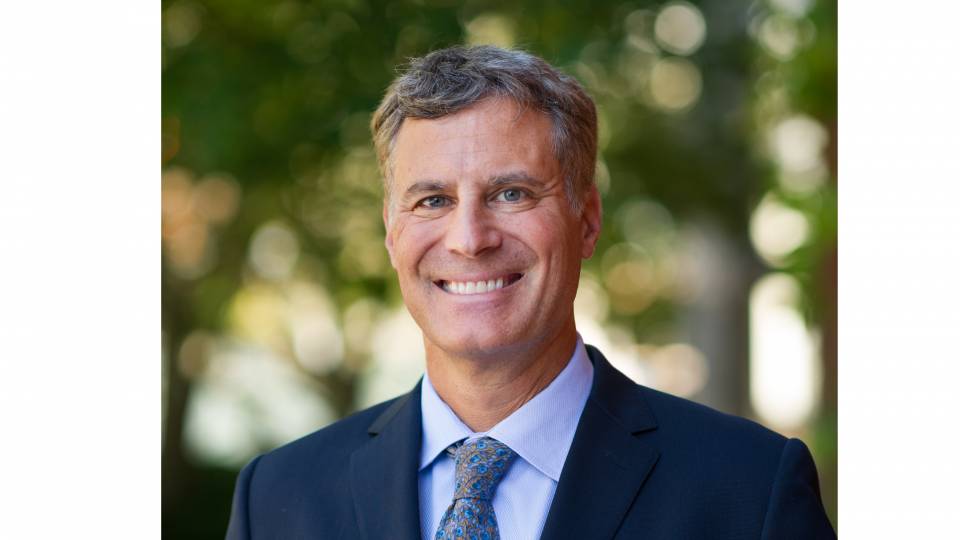From the Feb. 20, 2006, Princeton Weekly Bulletin
To address the current debate about whether China’s and India’s growing economies will soon rival that of the United States, Princeton economist Orley Ashenfelter poses a simple question: What is the going rate for flipping burgers?
Ashenfelter is conducting a study of McDonald’s employees’ wages in many countries to illustrate the relative strength of their economies, and early results indicate that developing nations still have a long climb. While the average hourly “McWage” is around $6 in the United States and other western nations, the same job in China, India and other developing countries pays less than 50 cents.
“A Big Mac is the same everywhere. The job is the same,” Ashenfelter said. “What makes a country wealthy is the wage rate that the market can guarantee for someone who wants to work. To most people in the developed world, a $6 job would seem to not be much of an accomplishment — in fact, it is a huge accomplishment that most of the world cannot yet even aspire to.”
This creative approach to examining an important economic issue typifies the style that has made Ashenfelter one of the leading figures in labor economics. For more than 30 years, he has been a pioneer in devising inventive experimental methods to answer key questions about labor markets and other areas of economics.
Ashenfelter is known for groundbreaking work early in his career in evaluating the effectiveness of government-funded labor programs and for tackling a wide array of research subjects, including a notable study of how education affects earning power based on data collected from identical twins. Other projects have explored diverse topics ranging from wine prices to the informal markets for undocumented day laborers.
“I’ve always been interested in quantifying things that are difficult or that some people think are impossible to quantify — that is a theme of almost everything I’ve done,” he said.
Since joining the Princeton faculty in 1968, he also has been a mentor to many top economists who have studied and collaborated with him in the Department of Economics and its Industrial Relations Section.
“Orley is one of the most influential labor economists of our time,” said Cecilia Rouse, director of the Industrial Relations Section, which Ashenfelter directed from 1974 to 1995 and 1997 to 2000. “He has advised countless outstanding economists, and much of his influence can be seen in the way that modern empirical labor economics focuses on careful estimation and measurement.”
“Ten minutes talking to Orley is the equivalent of at least five hours with most other economists,” she added.
Matthew Weinberg, a doctoral candidate in economics, called Ashenfelter “a true role model as an academic. He has a contagious curiosity and always has constructive comments concerning the research of his graduate students. Orley’s work consistently sheds light on important policy issues through careful analysis, and his graduate students strive to emulate these characteristics of his work.”
In 2005, Ashenfelter was awarded the Society of Labor Economists’ Jacob Mincer Prize, honoring lifetime achievements in the field, along with Nobel Laureate James Heckman of the University of Chicago. Heckman, who earned his Ph.D. at Princeton in 1971, has collaborated with Ashenfelter on studies on labor supply and discrimination.
“He had a huge impact on me when I was a grad student and young professor,” Heckman said. “He and I wrote many papers back in the early 1970s and it was a very valuable learning experience. … His impact is very, very substantial.”
In 2003, Ashenfelter received the prestigious IZA Prize in Labor Economics from Germany’s Institute for the Study of Labor. In its prize citation, the society noted, “Ashenfelter’s scholarly contributions have fundamentally transformed the analysis of labor markets. In a number of seminal articles he has broken new ground in various core areas of labor economics including research on trade unions, wages and employment, the analysis of labor supply, and the study of discrimination, education and training.”
Ashenfelter, who is the Joseph Douglas Green 1895 Professor of Economics, graduated from Claremont McKenna College in 1964. He earned his Ph.D. in economics at Princeton in 1970, two years after he was named to the faculty as a lecturer. He became an assistant professor in 1970, associate professor in 1971 and full professor in 1973.
In 1972, he took a yearlong leave to direct the U.S. Department of Labor’s Office of Evaluation, where he was charged with analyzing the effectiveness of initiatives such as job training programs, the minimum wage and health and safety regulations. Ashenfelter devised an innovative experiment to gauge the success of the Manpower Development and Training Act, which was created to help lift people out of poverty.
Using government data, Ashenfelter studied employment and income levels of workers before and after they participated in training programs and compared those to similar data for a general population of U.S. workers over the same period. The study proved that training programs were an effective tool for improving participants’ employment opportunities and earnings.
Creating the standard
The development of this “natural experiment” method — real-world tests of the impact of a new policy, program or some other change — was a breakthrough that has become the standard in studying social programs and various topics in economics and other fields. Economists have used natural experiments, for example, to gauge the effect of civil rights legislation on incomes, the impact of pollution control on property values and changes in consumer prices due to corporate mergers.
“Today labor economists focus on issues such as health, education and crime among other topics, largely due to Orley,” Rouse said.
One of Ashenfelter’s best-known areas of study is the relationship between education and income. Research into the impact of education had been complicated by the fact that many other factors, such as social class or innate intelligence, could contribute to someone’s earning power. Ashenfelter and Princeton colleague Alan Krueger found a way to bypass those factors through an unusual field study.
Beginning in 1991, the researchers traveled to the Twins Day Festival in Twinsburg, Ohio — which attracts thousands of twins each year, young and old — and interviewed more than 600 attendees over three years to collect data on their schooling and earnings. They were assisted by graduate students and, in one year, a pair of identical Princeton undergraduates.
Ashenfelter and Krueger, who also collaborated with Rouse on the study, found that each year of additional schooling equaled an additional 12 to 16 percent in earnings. Because the study compared genetically identical subjects, excluding other factors that were difficult to measure, it was widely considered the strongest analysis to date of the impact of education on earnings.
“What drove it was the fact that we realized there was a cheap and easy way to collect data,” said Ashenfelter, “and it was hysterically funny to go to a festival like that.”
Krueger said, “The twin study was great fun. What I took away from the experience is that Orley never treats research as finished. He thinks long and hard and deeply about economic problems. He also makes research fun. Our paper made a splash because we collected new data … and used simple as well as sophisticated econometric methods to answer a longstanding question in economics.”
From wine to new markets
Another area of interest that has garnered considerable attention is Ashenfelter’s focus on wine. In the 1980s and 1990s he published a newsletter, Liquid Assets, which raised the ire of some wine producers and writers by arguing that data on temperature and rainfall — and its effect on grapes — was a better gauge of wine quality and value than the recommendations of critics.
“With data on the weather, I can tell you whether the vintage is good or bad before the wine is made — what do you need wine tasters for?” Ashenfelter said.
Though it has been a personal project, Ashenfelter plans to explore the topic of wine in a more academic fashion. “It is a big issue in France and Australia, and to some extent here, because there’s a huge oversupply of grapes. I’d like to try to help make it more of an academic enterprise, with high-quality research. I would like eventually to do a book on it,” he said, envisioning a wine economics handbook as a future project.
Among his more recent projects, Ashenfelter has collaborated with former students to investigate informal markets for undocumented immigrant laborers, which are prevalent throughout the country but have been largely unexamined by economists. As part of their senior thesis projects, three recent graduates conducted interviews with day laborers in New York, New Jersey and Texas to find out more about how these markets operate, a topic that Ashenfelter has been curious about for years.
“There are no taxes, no unions — this is just a market that operates on its own,” he said. “There is no evidence they’re being exploited. Not only do they have high wages, but they have organized themselves.”
One of his students, 2005 graduate Andres Diamond-Ortiz, said, “Professor Ashenfelter’s guidance during my research was invaluable. In addition to offering a great deal of direction and constructive critique, he would always suggest clever ways of conducting further research on possible ‘natural experiments.’”
Diamond-Ortiz, whose thesis focused on workers in Houston, recalled that Ashenfelter had suggested that it would be interesting to explore the effect of a hurricane on day laborers’ wages — nine months before Hurricane Katrina hit New Orleans, sending an influx of workers to Houston. Ashenfelter and Diamond-Ortiz are now seeking to gather data to study the hurricane’s impact on those workers.
Like many colleagues and students, Diamond-Ortiz noted Ashenfelter’s good humor and enthusiasm. “I often felt that were it not for his support and unwavering enthusiasm about our project, writing my thesis would not have been as fulfilling or redeeming an experience,” he said, adding that the project helped shape his career plans to become an attorney with a concentration in immigration and employment law.
Krueger said that Ashenfelter’s reputation as an exceptional mentor to both students and colleagues is well deserved.
“He cares deeply about building up and maintaining a top program in labor economics at Princeton. He is very supportive of his students, and he is always on the lookout to help them — both his current and his past students,” Krueger said. “He is also very charismatic. He enjoys spending time with people who will listen to his stories, especially students. And he takes his students very seriously, treating them as individuals from whom he can learn.”




